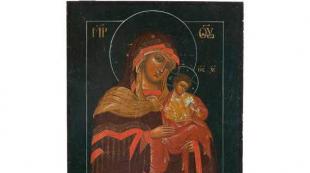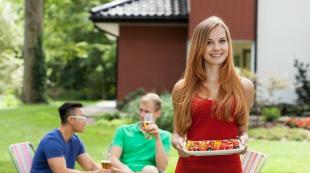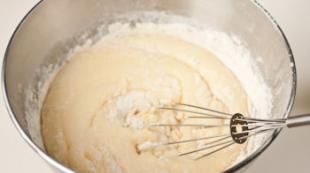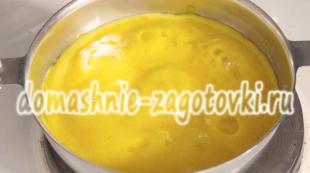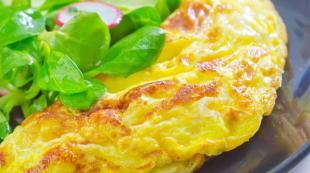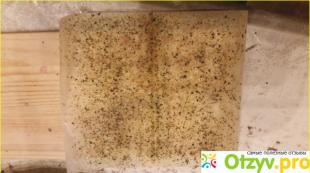Temple of the Konevskaya Icon of the Mother of God in the village of Sapernoye - pharmateacher. In the name of the Konevskaya Icon of the Mother of God Temple Konevskaya Temple
In 1798, Metropolitan Gabriel of St. Petersburg blessed the return of the Konevsk Icon of the Mother of God to the monastery on Konevets Island on Ladoga. From the Novgorod Derevyanitsky Monastery, where the rescued shrine remained for many years, it was brought to the capital and stayed in the city for two months while a silver chasuble was minted for it. Many believers asked to leave her in the capital. However, by order of the Holy Synod, the shrine was supposed to sail to Konevets, but it was allowed to make a list for the capital, which they decided to place in the St. Petersburg courtyard of the Konevsky Monastery. The choice of location for its construction fell on the site at Zagorodny Prospekt, 7, and in 1821, merchants Ivan Kozulin and Nikolai Kuvshinnikov gave the plots of land they owned for a courtyard, which was founded by the abbot of the Konevsky Nativity Monastery, Abbot Israel on September 28, 1821, after the Highest permission of the Sovereign. The stone chapel on a granite foundation and the monastic cells stood until 1862, when on May 28 a terrible fire destroyed everything from Gostiny and Apraksin courtyards to Zagorodny Prospekt. Soon the inhabitants of the monastery began to collect donations for the construction of a new chapel with cells. On March 28, 1863, the new design of the chapel with a hipped belfry on the site of the burnt one was approved by the Highest, and on December 15 it was consecrated by Abbot Israel in the name of the Konevskaya Icon of the Mother of God. The author of the project, I. B. Slupsky (1826 - 1891), was already known as the creator of other structures for the Konevsky Monastery. A three-story stone building was built in the courtyard, which served for housing.
The church wing, facing the avenue, was painted green. On the ground floor there was a temple with a large altar near the spiral staircase, a sacristy, a room next to the choir and a duty room. The main part of the temple was separated from the altar by a wooden iconostasis with icons of the Savior Not Made by Hands, St. Nicholas the Wonderworker, St. Alexy Metropolitan of Moscow, Archangel Michael and St. Prince Alexander Nevsky. The throne and altar were marble. The miraculous icon of the Konevskaya Mother of God was placed in the temple in a marble icon case. On the second floor, where the choir was located, among the numerous icons, images of the Mother of God - Kazan, Smolensk and the Savior Not Made by Hands - stood out. In the main church of the courtyard, services were performed daily. F. M. Dostoevsky, who lived nearby, sometimes prayed in the church. The holy righteous John of Kronstadt also served here.
On the top floor there was a house chapel with an iconostasis (if the second altar in the courtyard was consecrated, it is unknown in whose honor - judging by the iconostasis of the upper church, probably the Ascension of the Lord or the Mother of God). It was located on the left side of the building above the arch with a gate and had windows facing the courtyard. Weddings, christenings, and religious services were held here.
In 1919, the church became a parish church and was transferred to the Diocesan Department. On July 11, 1932, by decree of the Presidium of the All-Russian Central Executive Committee, the Church of the Konevskaya Icon of the Mother of God was closed. The icon itself was transferred to the current church of St. Simeon and Anna the Prophetess. Until the 1990s, the Lenstroyrekonstruktsiya TSO "Lenstroyrekonstruktsiya" under the district administration was located in the building of the temple, which had lost its tent construction, and the courtyard.
In 1992, believers began to petition for the transfer of the metochion to the St. Petersburg diocese, but they met strong resistance from the administration of the construction trust. The building of the courtyard (only the building facing Zagorodny Avenue) was handed over to believers only on December 4, 1996. The first liturgy was celebrated here on September 19, 1997.
Restoration work has begun since 1996. A new stained glass window with the image of the icon of the Sign of the Mother of God was installed in the altar of the church of the courtyard. The revival of the original appearance of the temple continues.
The history of the Konevskaya Icon of the Mother of God began far beyond the borders of the Russian land - on Mount Athos, and only after that it arrived in Russia.
At the origins of history
This venerable event (the arrival of the great icon on Russian soil) took place at the end of the 14th century. The young monk Arseny went to Athos to spend several years in strict fasting and prayer to God.
After three years, he decided to return to Novgorod in order to resurrect ancient traditions and revive the feat of monasticism in his native land. The abbot of one named John Zidon, from whom the monk asked for a blessing for a good deed, not only allowed him to carry out his plans with God's help, but also gave him a miraculous icon of the Mother of God. To instruct the novice, he uttered prophetic words, indicating that he would soon become abbot.
Upon arrival on Russian soil, the monk immediately went to Archbishop John of Novgorod and Pskov in order to ask for permission and blessing to found the monastery. With a light word from the Archbishop, Arseny went to Konevsky Island in Lake Ladoga. Konevskaya went with him. There, after a while, it was erected along with the monastery.
Exorcism of demons and triumph of the Mother of God
Arseny knew about the miraculous power of the icon from the time when he lived on Athos. And here, in a monastery on Russian soil, he was not the only one who felt the unknown grace and tranquility emanating from the icon.

Before the solemn arrival of the icon on the lands of Russia, almost all the people living on the island professed a pagan religion and worshiped the forces of nature, and in the center of the island there was the main object of worship - a sacred stone idol. Arseny, armed with the word of God and taking in his hands the icon of the Konevskaya Mother of God, walked with a religious procession throughout the island and stopped at the pagan stone idol. Arseny stood in this place and with all his heart, with all his soul, prayed to the Lord God.
The power of the shrine is great: at one moment the stone ceased to carry the pagan power, and the demons that escaped from it became black crows and scattered in all directions. Since then, the previously main pagan idol has become the main symbol of the revival of Orthodoxy on the Konevskaya land.
Protection and protection of Konevskaya land
None of the inhabitants of the island was faced with the question, how does the Konevskaya Icon of the Mother of God help a person? Yes, in everything, and all the children and adults in the area knew about it.

More than once she saved these lands from various troubles and misfortunes, and therefore began to be revered as the defender and patroness of Konevsky Island and the surrounding lands. And even when the Swedes attacked Karelia, the Mother of God did not turn away from people, but had mercy, saved and protected. During the same attack, an attempt was made on the icon of the Mother of God itself. The enemies, not ashamed of either God or the Tsar, wanted to plunder the monastery and destroy it. Incredibly, at one moment, from the sky, in which there were no clouds or clouds, a strong roar was heard and lightning flashed - a storm began. The ice around Konevsky Island cracked and broke overnight, so the Swedes simply could not get to the island and carry out their plans.
This event became another intercession of the Blessed Virgin Mary.
"Chronicles of troubled times..."
After some time, Sweden declared a brutal war on Russia, just when the Russian army was completely unprepared and did not have decent weapons. Unfortunately, the lack of preparedness of the Russian soldiers was not in vain - the army suffered enormous losses. All novices, monks, abbots and priests of the Konevsky Monastery had to urgently evacuate to safer places. For some time, the Novgorod Derevyanitsky Monastery became the refuge of the brotherhood and the Konevskaya icon itself.

After 18 years, they were able to return to their native lands, but strained relations between the armed countries did not make them wait long for another military confrontation. The monks again had to return to the Derevyanitsky monastery, and then to the Tikhvin monastery.
The ceremonial return of the Konevskaya Icon of the Mother of God to its home took place at the end of the 19th century with the blessing of Metropolitan Gabriel. Somewhat later, on the spot where Abbot Arseny found his eternal refuge, a church was erected in honor of the Entry of the Most Holy Theotokos into the temple. But for fifty years now the miraculous icon has been kept in the New Valaam Monastery in Heinävesi.

Temple of the Konevskaya Icon in the village of Saperny
The Temple of the Konevskaya Icon of the Mother of God in the Priozersky district) was built not so long ago and is now open to visitors from parishioners and pilgrims from all over the country and neighboring countries.

The construction and consecration of the temple took place at the end of the twentieth century, but the builders and architects did not stop transforming and improving the appearance for several years after the consecration. This continued until the building took on its modern appearance. This temple is actually not so simple and differs from others in many ways. It consists of two parts: underground and above ground.
When laying the foundation, it was thought out down to the deepest detail how to arrange the chapel of St. Sergius of Radonezh, which was dug and equipped by hand. A marble iconostasis was made especially for the underground part, and craftsmen worked on wall paintings. The ceremonial consecration of the underground temple was held in 2003. Many consider it an honor to baptize their children, as well as adults, in the lower church, where a special human-sized bowl is built in the ground for complete immersion.
Temple and hospital attached to it
The temple was built according to the design of the talented architect N. S. Veselov, who developed the design in the style of northern wooden architecture. The original idea concerned the construction of a temple and the further construction of a monastery around a wooden structure, but now the church is considered part of the local rehabilitation center "Resurrection", intended for the treatment of drug addicts with subsequent rehabilitation in the monastery open spaces.
The entire staff of the treatment center professes a charter similar to the monastic one, and the very principle of delivering people from severe drug addiction is based on the Orthodox idea. The hospital's patients are only men; the rehabilitation period is approximately six to nine months. In small groups, men can come to the temple and walk around the picturesque area, receiving healing not only with the help of doctors and medications, but also from nature. The Konevskaya Icon of the Mother of God is also kept here. In Saperny, near the temple there is a small park with a fountain - this place is very fond of parishioners and pilgrims.
Requests for healing before the miraculous icon
The Akathist to the Konevskaya Icon of the Mother of God is read on a variety of occasions. The Mother of God does not leave without help all those who sincerely ask for her help, especially those who turn to her to be healed of demons, common eye diseases, blindness, drug addiction and paralysis. When it is not possible to read the akathist or you do not know how, you can turn to the Mother of God with sincere prayer from the bottom of your heart in your own words.

In such cases, it is important to remember that in prayer before God it is not the words and correct pronunciation that are important, but purity of thoughts, repentance, and sincerity of the request. All believers must understand that people may not understand our words, but not God. God always understands everything, but do we understand him? When the need arises, you must pray as best you can. Prayer to the Mother of God has enormous power and is capable of working miracles.
Both parishioners and pastors know that the Konevskaya Icon of the Mother of God is capable of working miracles, and this is indeed so!
Celebration in honor of the icon
The Day of the Konevskaya Icon of the Mother of God falls on July 10/23. Every year, in honor of the holiday, the memory of the Mother of God is honored at the Konevsky Skete by performing a prayer service: a Liturgy and a religious procession led by an icon.
On normal days, the temple is open every day except Monday. And every week an akathist is read before the miraculous Konevskaya Icon of the Mother of God.
The history of the St. Petersburg metochion of the Konevsky Nativity of the Mother of God Monastery is inseparable from the history of the main shrine of the monastery - the miraculous Konevskaya Icon of the Mother of God, which the Monk Arseny Konevsky brought from Holy Mount Athos. The monks of the monastery endured many spiritual joys and everyday sorrows. In 1617, according to the Stolbovo Peace Treaty, along with the entire northern and western Ladoga region, Konevets went to Sweden, and the brethren, having taken the Konevskaya icon, were forced to move to the Novgorod Derevyanitsky Monastery. Only in 1718, Emperor Peter the Great, who conquered these lands, ordered the restoration of the Konevsky Monastery. However, the miraculous Konevskaya Icon of the Mother of God continued to remain in Novgorod.
In 1799, with the blessing of Metropolitan Gabriel (Petrov) of Novgorod and St. Petersburg, Konevsky builder Hieromonk Bartholomew received permission from the Holy Synod to return the holy icon to the monastery. On the way to Konevets, Father Bartholomew stayed in St. Petersburg for two months while a gilded silver chasuble was made for the icon. And at this time, through prayers before the image of the Most Holy One, which, due to the lack of a monastery, had to be kept in private homes, many miraculous healings took place, eight of which were documented (Historical and statistical description of the Nativity of the Konevsky Monastery. St. Petersburg, 1869, 71-73; Central State Historical Archive St. Petersburg, f19, op1, no. 11959).
These miraculous healings from the holy icon aroused the desire of St. Petersburg residents to return the icon to the capital. The brethren ordered a list (copy) of the icon and began to look for a place for a courtyard where this list could be located.
Those who were zealous for this image in 1811 petitioned to establish a courtyard of the Konevsky Monastery in the capital. Initially, it was planned to organize it on the winter Horse Square, but the chapel located there (between Alexander Nevsky Square, Lavrsky and Chernoretsky lanes) was small, noisy fairs were constantly held on the square, and the authorities created various obstacles to this undertaking.
Only in 1821, St. Petersburg merchants Nikolai Kozulin and Ivan Kuvshinnikov donated plots of their land along Zagorodny Prospekt (17.5 sq. fathoms) for the construction of a chapel, “more convenient than on the Winter Horse Trading Square between the cart shops” (TsGIA St. Petersburg, f.921, op.18., d.1099). N. Kozulin then donated another 7 square fathoms, and I. Kuvshinnikov gave 84 and 5/6 square fathoms to the monastery. for 857 rub. 14 and 2/7 kopecks. Permission for land ownership and the construction of a chapel came from Emperor Alexander the First on August 5, 1821. at the personal request of the St. Petersburg Governor-General M.A. Miloradovich, the land was given “to the ownership and eternal possession of the Konevsky monastery” (TsGIA, f. 797, op. 2, d. 5129, l. 50, Historical and statistical description…… ..., pp. 75-77). Plans of the site and subsequent buildings on it, documents on the donation and sale of land were preserved in the archives of St. Petersburg (St. Petersburg, f. 513, op. 102; Zagorodny pr., no. 7; TsGIA, f. 797, op. 2, d .5129).
On September 8, 1821, the builder of the Konevsky Monastery, Hieromonk Illarion (Kirillov), founded a stone chapel on a granite foundation and a cell.
The metochion was revered by the people; many St. Petersburg residents preferred to attend strict monastic services. F. M. Dostoevsky also visited here.
The list of the Konevskaya Icon of the Blessed Virgin Mary, located in the courtyard, became famous for many miracles, among which was the salvation of Gostiny Dvor from a fire in 1862. During this terrible fire, when on May 28 the fire destroyed thousands of shops of the Apraksin Dvor and burned many buildings around, the merchants of Gostiny Dvor , fearing destruction from the fire, they begged the clergy to make a religious procession with the image of the Konevskaya Icon of the Mother of God around their shopping arcades. Suddenly, in the midst of the fire, the wind changed and the fire began to subside. Gostiny Dvor was saved. In gratitude and in memory of the miraculous deliverance, the Gostinodvor merchants voluntarily collected donations for a new stone courtyard building with an outbuilding.
Through the diligence of the rector of the monastery, Archimandrite Israel (Andreev), hieromonks Dionysius and Abraham, a new “magnificent, more temple-like chapel with cells” was erected. It was painted inside, the iconostasis was “finely carved.” The project was compiled by academician of architecture Ivan Slupsky (1826-1891), who worked a lot for the Konevsky Monastery (monastery, hotel, outbuildings). The file on the construction of the chapel is kept in the Central State Historical Archive of St. Petersburg (TsGIA St. Petersburg, f. 1883, op. 1, no. 250). On December 15, 1866, it was solemnly consecrated by Archimandrite Israel in the name of the Konevskaya Icon of the Mother of God.
After the October Revolution, when Finland became independent and Konevets found himself on its territory, the courtyard church became a parish church (since 1919).
On July 11, 1932, the church in the name of the Konevskaya Icon of the Blessed Virgin Mary was closed and transferred to the district municipal department. The outbuilding in the courtyard was occupied by residents. The courtyard building is an architectural monument, but this did not stop the “new owners” from disfiguring it beyond recognition - the dome was demolished and a second floor was built in the temple building. Since 1956, the Fasadremstroy trust was located here, which, despite the formal return of the building to the monastery in 1993, refused to leave it.
Only at the end of 1996, through the diligent care of the first manager of the metochion, Archpriest Sergius Belkov, the temple was transferred to the Konevsky Monastery. On January 6, 1997, the first divine service was held here.
On September 27, 1998, on the Feast of the Exaltation, a Cross was erected above the building of the courtyard. The Konevskaya icon, made of quartz sand, is installed on the restored facade. The monastery, as before, represents the monastery in St. Petersburg, provides it with all the necessary materials and products, transports pilgrims, and spiritually nourishes the parishioners of the monastery church.
Divine services are held in the church built on the ground floor in the name of the Konevskaya Icon of the Mother of God. In the temple there is a copy of the miraculous Konevsky image, particles of the relics of St. Arseny Konevsky and Equal-to-the-Apostles Mary Magdalene. At the monastery there is an icon and bookstore with a large selection of books and icons; here you can submit notes about the remembrance of relatives and friends in the monastery and at the monastery.
From September to May there is a local Sunday school for children, and weekly discussions are held for adults. Catechesis is also provided for those preparing for the sacrament of Baptism. There is a parish library.
At the courtyard is located the Pilgrimage Service of the Konevsky Nativity of the Mother of God Monastery, which organizes pilgrimage trips to the Konevsky Monastery, to the Orthodox shrines of the Ladoga region and Finland.
The history of the Konevsky metochion in St. Petersburg is inseparable from the history of the main shrine of the monastery - the miraculous Konevsky Icon of the Mother of God, which the Monk Arseny brought from the Holy Mount Athos.
When Konevets went to Sweden in 1610, the brethren, taking the Konevskaya icon, were forced to move to Novgorod. And only in 1718, Emperor Peter the Great, who recaptured these lands, ordered the restoration of the Konevsky Monastery. However, the miraculous Konevskaya Icon of the Mother of God continued to remain in Novgorod.
In 1799, with the blessing of Metropolitan Gabriel (Petrov) of Novgorod and St. Petersburg, Konevsky builder Bartholomew received permission from the Holy Synod to return the holy icon to the monastery. On the way to Konevets, Father Bartholomew stayed in St. Petersburg for two months while a gilded silver chasuble was made for the icon. And at this time, many miraculous healings took place from the Konevsky icon. The brethren of the monastery joyfully greeted the long-awaited shrine with the ringing of bells and a procession of the cross.
Miraculous healings from the holy icon in 1799 aroused the desire of St. Petersburg residents to return the icon to the capital. The brethren ordered a list (copy) of the icon and began to look for a place for a courtyard where this list could be located.
In 1821, merchants Ivan Kozulin and Nikolai Kuvshinnikov donated two neighboring plots of land on Zagorodny Prospekt for the construction of a courtyard. On September 8, 1821, the abbot of the Konevsky Monastery founded a church there. The metochion was revered by the people; many St. Petersburg residents preferred to attend strict monastic services. F. M. Dostoevsky also visited here.
The copy of the icon, like the icon itself, became famous for many miracles, including protection from the terrible fire of 1862. During this fire, when the fire reached Zagorodny Prospekt across the Fontanka from Apraksin Dvor and burned a lot around, all the icons were taken from the courtyard to the Vladimir Cathedral.
The merchants of Gostiny Dvor, fearing ruin from the fire, begged the clergy to make a religious procession with the image of the Konevskaya Icon of the Mother of God around their shopping arcades. Suddenly the wind changed and the fire began to subside. Gostiny Dvor was saved. In memory of this, the merchants built a new stone courtyard building designed by the architect Ivan Slupsky with an outbuilding in the courtyard.
After the October Revolution, in 1919, the temple became a parish, and on July 11, 1932 it was closed and transferred to the district municipal department. The outbuilding in the courtyard was occupied by residents. The courtyard building was recognized as an architectural monument of regional significance, but this did not stop it from being disfigured beyond recognition. Since 1956, the Fasadremstroy trust was located here, which, despite the formal return of the building to the monastery in 1993, refused to leave it until the end of 1996. Only on January 6, 1997, the first inhabitants appeared here.
The metochion, as before, represents the monastery in St. Petersburg, provides it with all the necessary materials and products, and spiritually nourishes the Orthodox residents of St. Petersburg. Divine services are held daily in the church built on the 1st floor in the name of the Konevskaya Icon of the Mother of God. In the temple there is a copy of the miraculous image, as well as an icon of St. Arseny with a particle of relics. On September 27, 1998, on the Feast of the Exaltation, a Cross was erected above the building of the courtyard. The Konevskaya icon, made of quartz sand, is installed on the restored facade.
The building of the courtyard also houses the Pilgrimage Service of the Konevsky Monastery and a shop where you can buy icons, books, candles and other goods, as well as submit notes about relatives and friends.
Priest Sergei Nikolaevich Belkov, by the will of God and by decree of Metropolitan John of St. Petersburg and Ladoga dated August 23, 1994, was appointed builder and rector of the Church of the Konevskaya Icon of the Mother of God in the village of Sapernoye.
Construction of the temple began in September 1994. And on the day of the Epiphany, January 10, 1995, the first Great Blessing of water took place near the walls of the standing temple.
By the providence of God, the vision of the Most Pure Mother of God herself and through the fervent prayers of the rector's father, a parish was created along with the construction of the temple. Father consecrated houses, baptized, performed unction, held funeral services at home, and people soon saw that the Lord had sent them an active, strict, demanding and at the same time, kind and responsive priest. There seems to be no limit to his efforts and capabilities. With full dedication, without sparing himself, he treats both the construction of the temple and the creation of the parish.
At the parish meeting, it was proposed to consecrate the temple in honor of the Konevskaya Icon of the Mother of God, which was previously considered the patroness of the Karelian land.
Due to the lack of funds and qualified workers, the construction of the temple progressed very slowly. However, after 10 months the temple was erected. It was a cube with boulders in the corners.
On June 22, 1995, with the blessing of Metropolitan John (Snychev), the dean of the Priozersk district, Archpriest Nikolai Teteryatnikov, the abbot of the Nativity of the Mother of God Konevsky Monastery, Archimandrite Nazariy (Lavrinenko), the rector and builder of the temple, Priest Sergius (Belkov), in concelebration with the brethren of the Valaam and Konevsky monasteries, the temple was consecrated with a small rite in honor of the Konevskaya Icon of the Mother of God. After this, the first Liturgy was served. Bishop Simon served a prayer service before the Konevskaya Icon of the Mother of God. And the life of another Orthodox church began on the land of Priozerskaya.
However, by the providence of God, an unusual fate was prepared for our parish and our church. Exactly one year after the consecration of the temple, a miracle occurred in it. On July 22, 1996, on the eve of the Patronal Feast, the myrrh streaming of the analogue Konevskaya Icon of the Mother of God began, which was accompanied by the healing of the sick, which is described in the book “Signs of God from the Holy Icons 1991-96.” (collected and recorded by A. Lyubomudrov, St. Petersburg, 1997).
Father Sergius regarded the miracle of the icon’s myrrh streaming as a blessing from God’s Mother for the rehabilitation of drug addicts. One of them, God's servant George, painted the miraculous icon. Since April 1996, a spiritual hospital has already been established at our church, the first Diocesan rehabilitation center for drug addicts in Russia. The image of the Most Holy Theotokos has become a particularly revered shrine of our church. And Priest Sergius Belkov humbly took upon himself the cross of rehabilitation of drug addicts. Father already had some experience working with the sick. He worked with them back in the monastery on Fr. Konevets. At the same time, the priest still had obedience in the Konevsky Monastery. He was appointed rector of the Konevsky Monastery in St. Petersburg. At the same time, the parish in the village of Sapernoye was growing, the church became crowded, especially in the summer. Therefore, it was time to think about expanding the temple. But not only about that. It was necessary to create jobs for those being rehabilitated, because... Only work and prayer can return to the sick the image of God darkened by sins. The construction of a workshop was required. The parish also felt the need to build a parish house. Since the spring of 1996, the preparation of logs for the parish house has been going on. In the summer of 1996, the foundation of the house was laid and construction began in the fall, which ended in December 1998. In the summer of 1996, construction of the workshop also began, which was completed in the fall of the same year. Since the autumn of 1996, the preparation of logs for the expansion of the temple began, and in the summer of 1997, the construction of the right side of the building began. Before the Patronal Feast (July 23), the walls of both prirubs were erected. There was no roof, but, by the grace of God, the days were sunny and nothing overshadowed the holiday. In October 1997, the roofs over the prirubs were erected, and construction was completed in December. As a result of the first reconstruction, the main part of the temple was enlarged. In 1998, the temple did not undergo external changes, but was decorated inside.
With the construction of the parish house in 1999, a solution to many problems came: improving the living conditions of Fr. abbot and rehabilitators, in the house there is a cookhouse, a refectory, a sacristy, and storerooms. An opportunity arose to open a Sunday school for rehabilitation workers, children and parishioners, and a library.
By 1999, a farm was built in the parish and pets were raised. According to Fr. Sergius, work in the fresh air and nutritious natural food contribute to the recovery of the sick. Rehabilitators began to care for the animals. The experience of attracting the local population was unsuccessful, but city girls and boys, who at best have experience in caring for a cat and a dog, deftly and lovingly work on the farm.
1999 - the beginning of the second reconstruction of the temple. The purpose of the reconstruction is to expand the altar, the vestibule, raise the main part of the temple to a greater height, and build a choir.
In the summer of 1999, the altar and walls of the main part of the temple were erected. A roof was erected over the altar for winter. There is an old tarpaulin over the main part of the temple instead of a dome. The weather in the church is like outside: in the rain it rains, in the snow it snows... The first altar was preserved inside the new one. Therefore, services in the temple did not stop. In the fall of 2001, the second reconstruction of the temple was completed. The temple has acquired a different look and is a pearl of wooden architecture.
In the summer of 1999, construction of the bathhouse began, which was completed by the beginning of winter 2000. So gradually a parish courtyard was created around the temple: a parish house, a workshop, a bathhouse, a farm. Let us note that in the construction of the church and parish courtyard, rehabilitation workers also work together with specialists, thus acquiring the labor skills they need in their future life in the world. They are working to decorate the temple and other premises of the constructed buildings.
On the territory of the courtyard there is a vegetable garden, where, under the leadership of Mother Lyudmila, rehabilitators and parishioners grow vegetables for the church refectory.
In the summer of 2000, when the temple was raised to a new foundation, digging of a foundation pit under the temple began for the construction of the lower temple. Thus, in 2000-2001. Simultaneously with the reconstruction of the upper temple, the construction of the lower temple is underway: filling the walls and floor. Completed in the fall of 2001 and. 8/10/2001 on the day of the angel Fr. The first prayer service was served in the lower church by the rector, Priest Sergius. By this time the walls of the temple had already been finished. The main building materials were concrete and natural stone. The temple symbolizes the ancient Byzantine “foundation”, on which the upper wooden temple rests and “grows” from it - a symbol of the Russian Orthodox tradition. Thus, by 2002, a temple complex was formed.
2002 is the year the decoration of the temple complex began. In 2000, the time has come to share experience in the rehabilitation of drug addicts outside our diocese. Father with a report goes to Moscow, to the Danilov Monastery, to a conference organized by the Patriarchate, where there were representatives of 40 Dioceses of the Russian Orthodox Church.
Build temples, centers, souls... How can he manage to do everything? First we need to figure everything out. “Give me, God, the strength to overcome everything.” Since 2002, a team of masters from the icon painting and restoration workshop of St. John of Damascus of the Alexander Nevsky Lavra, with the blessing of the vicar, Archimandrite Nazarius, began complex work on beautifying the temple interiors of the parish of the Church of the Konevskaya Icon of the Mother of God in the village of Sapernoye, Leningrad Region. Together with the rector of the temple, Priest Sergius Belkov, the sequence and program of all design and icon painting work was formed. In accordance with the program, work began with designing the decoration of the lower temple. In the Lavra icon painting workshop, a design for the iconostasis, altar and temple decoration was completed, and a program for wall painting was drawn up (D.G. Mironenko). All wall painting work was distributed over three summer seasons.
In the summer of the same year, the construction of a stone iconostasis began, the construction of a natural stone Throne, an altar and a High Place in the altar, a stone funeral table in the northern aisle of the temple, and the installation of stone frames for all wall images. In the same season, the first paintings were completed in the altar and on the eastern walls of the northern and southern aisles of the temple, the crucifixion and baptism, the Royal Doors for the iconostasis, and a life-size image of St. Sergius of Radonezh on the western wall of the temple. The fact is that on April 7, 2002, on the day of the Annunciation, the lot indicated that the lower church should be consecrated in honor of St. Sergius, abbot of Radonezh. Therefore, the icon of the saint meets and sees off everyone who comes to the temple. All wall compositions are painted using the whole egg tempera technique. The iconostasis was completely finished in the spring of 2003, wall painting - in the fall of 2004.
In the winter-spring period of 2002-2003, a group of Lavra icon painters developed a project for a tyablo iconostasis for the upper church of the Konevskaya Icon of the Mother of God and began the construction of a wooden structure and carved decor of this iconostasis. At the same time, icons are being painted for the iconostasis of the upper church. To work with the iconostasis, not only Lavra icon painters, but also those from St. Petersburg were brought in.
In the summer of 2003, work continued on painting the walls in the lower church. And during the fall of 2003, winter and spring of the following year, the Deesis and prophetic rites for the upper iconostasis were completed in the icon painting workshop of the Lavra. The icons for the festive ceremony were painted by students of the diploma class of the icon painting school of the St. Petersburg Seminary. At the same time, the altarpiece of the Resurrection of the Lord was painted, work continued on the carved decor of the iconostasis, and three bronze chandeliers for the upper church were designed and manufactured at the Empire art and restoration company. For the lower church, a double-sided altar cross was made in the Lavra workshop.
2003 is the year of the consecration of the lower temple. On May 17, the vicar of the St. Petersburg diocese, Archbishop Konstantin of Tikhvin, Archimandrite Nazarius, and others arrived to consecrate the church.
After the consecration of the temple and the Divine Liturgy, Bishop Constantine read out the decree of His Holiness Patriarch Alexy II of Moscow and All Rus' on the elevation of the rector, Priest Sergius Belkov, to the rank of archpriest. In his sermon, Bishop Constantine noted the sophistication of the design of the lower church. Of course, God's mercy will advance in all matters in our center, but also Fr. the abbot does not sit idly by. A lot of sweat, blood and tears were shed before it all happened.
Back in 2003, construction began on a new workshop, significantly larger in size than the first. In the fall of 2003, construction was completed. The old workshop was converted into living quarters for rehabilitators.
By June 19, 2003, a temporary church was erected on the territory of the parish courtyard for participants in the anti-drug conference “Union of Priest, Doctor and Teacher.” Our rehabilitation workers took part in the conference.
In the summer of 2004, three final compositions were completed for the vestibule of the lower church.
By 2005, work on the construction of the iconostasis in the upper church was completed, but the beautification of the temple complex continues, and it seems there is no end to it.
In the spring of 2004, construction of a fence around the temple complex and the parish courtyard began.
Since the spring of 2004, construction has been underway on a house church in honor of St. App. Peter and Paul. Completed by spring 2005
In May 2004, a practical conference on the problem of rehabilitation of drug addicts in suburban rehabilitation centers was held at our center.
2005 is the year of the 10th anniversary of the temple, but first we experienced a grave temptation. On February 25, 2005, at about 12 noon, a fire broke out in the upper church. The brothers, parishioners, and firefighters fought the fire for about 3.5 hours. As a result of the disaster, part of the interior and wooden structures of the temple were damaged. The iconostasis was practically not damaged. The lower temple was flooded with water, but it can be said that it was not damaged either. An unquenchable lamp at the temple image of St. Sergius of Radonezh burned during the entire fire extinguishing process.
They immediately began to eliminate the consequences of the fire. Already by March 5, the dome and the sky were dismantled, the burnt logs of the main part of the temple and the left side where the fire broke out were removed.
In March 2005, the third reconstruction of the upper temple began. The left cut rises to a greater height, the roof changes shape. The right cut also undergoes corresponding changes. Then the main part of the temple, lost in the fire, is rebuilt. It also rises to great heights. Architectural changes were made to the drum and dome.
By the Patronal Feast, with the general joy and help of the parishioners, the temple was restored from the consequences of the fire and acquired a new beauty. On the outside, to this day it is decorated with external wooden carvings made in the parish workshop.
On the territory of the parish courtyard, an overhead chapel was erected, a large refectory with 80-90 seats was built, a rectory, a volunteer house, a sheepfold, and other outbuildings were built.
The area around the temple complex and in the courtyard has been landscaped. Fancy trees and shrubs grow against the backdrop of natural pines. Flower beds, fountains, and green lawns are pleasing to the eye.
Of course, God's mercy will advance in all matters in our center, but also Fr. the abbot does not sit idly by. A lot of sweat, blood and tears were shed before it all happened.
The creative potential aimed at building temples, centers and souls literally hovers and is felt in everything. Under these conditions, through work and prayer, the rehabilitation of drug addicts is not unsuccessful. Some of the brethren do not want to return to the world and choose the monastic path, some remain at the center as volunteers, some go to study at a theological seminary, and many of those rehabilitated are ready to help the center with their feasible participation. Thank God for everything!
